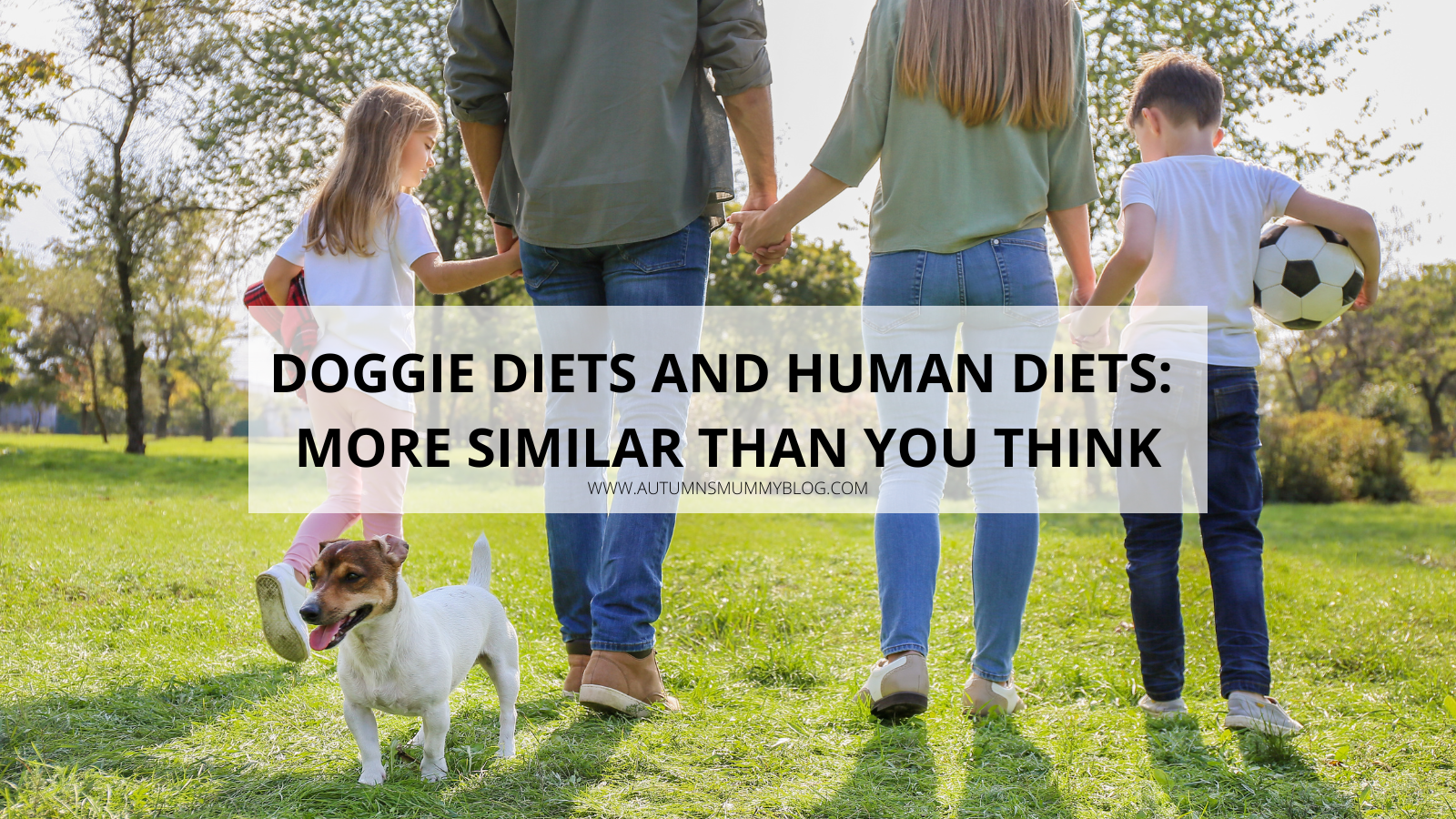Collaborative Post¦ As a mum, I can’t tell you the number of times I’ve had to remind my children (and occasionally my husband) about the importance of balanced nutrition. Whether it’s the classic “eat your veggies” or the more modern “cut down on the sugar,” maintaining a healthy diet is a constant topic at our dinner table. Recently, a friend’s dog embarked on a weight loss journey, and as we discussed her dog’s diet, I began to see some surprising similarities between dog diets and human diets. Here’s why our pet’s nutrition might be more similar to ours than you think.
Protein is a Star
Just as we need protein for muscle development, energy, and overall growth, dogs also require protein in their diet. Dogs, like humans, are omnivores, meaning they can eat both meat and plant-based food. High-quality dog foods often list a source of protein, like chicken or lamb, as the first ingredient. In our diets, we also aim to include a source of lean protein in our meals for similar reasons.
The Need for Balanced Nutrition
Whether you’re feeding a toddler, a teenager, or a terrier, the need for balanced nutrition is universal. Dogs, like humans, require a mix of proteins, carbohydrates, fats, vitamins, and minerals to thrive. Too much of one nutrient or not enough of another can lead to health problems. It’s why we don’t let our kids live on a diet of just chicken nuggets, and why dogs need more than just steak in their bowl.
Avoiding the Junk
Just as we’re told to limit processed foods in our diet, the same goes for our canine companions. Many commercial dog foods are filled with additives, preservatives, and fillers that offer little nutritional value. High-quality dog food brands often advertise their avoidance of these unnecessary additives, similar to how human food brands highlight their “clean” ingredients. It’s the equivalent of choosing whole grain bread over white bread or a fresh apple over apple-flavored candy.
The Weight Loss Connection
This is where it gets interesting. More and more, we’re seeing dog food brands introducing ‘dog food for weight loss‘ lines, mirroring the ‘light’ or ‘diet’ options available for humans. These foods typically have fewer calories and more fibre to help dogs feel full without overeating, much like the principles of human weight loss diets.
The Danger of Overfeeding
Ever tried to refuse a second helping at Gran’s house? It’s the same with our pets. Overfeeding is a common problem that can lead to obesity in both humans and dogs. Even if we’re choosing healthy foods, portion control is vital. Just as we have to resist those puppy-dog eyes at the dinner table, we also have to resist them when Fido wants an extra serving of his meal.
The Takeaway
While our diets aren’t exactly the same (chocolate and avocados are delicious for humans but dangerous for dogs), the principles of good nutrition are surprisingly similar. It’s a reminder that whether we’re caring for our kids or our pets, we have the same goal: to nourish their bodies in the best way possible. It’s funny to think that the lessons we learn from our vet can help us in our family’s health journey, and vice versa. So, next time you’re contemplating the best diet for your family or your furry friend, remember, it’s all about balance, quality, and moderation.
